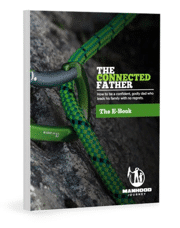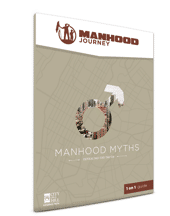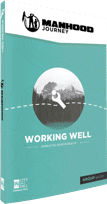Have your kids ever done something dangerous, stupid, or reckless?
Mine have. Often. When they do, we have a conversation like this:
Me: “Hey ______! Stop that!”
My son: “Why?”
Me: “Nope. You tell me. I’m not doing your mental work for you. I want three reasons that’s a bad idea.”
Sometimes, if we’re approaching dinner time or they have an outing planned, I’ll add, “And, until you tell me, you can forget about going bike riding.”
Question: When’s the last time you pointed your child to the Bible?
“Come now, and let us reason together,” Says the Lord, “Though your sins are as scarlet, they will be as white as snow; though they are red like crimson, they will be like wool.”
—Isaiah 1:18 (NIV)
The strategy in this article is just a snippet from The Connected Father digital course—full of videos, podcasts, eBooks, tip sheets and bonus resources to help you be the dad who leads with no regrets. Snag the full course at The Connected Father.
“Give me three reasons that’s a bad idea.”
I normally get three reasons within a minute.
“Uh…first, you’ve told me not to do it before. Second, it could poke my brother’s eye out. Third, detonating explosives indoors is always a bad idea…”
There we go. Problem solved, lesson learned.
But, even better than the lesson being learned – they’ve learned how to learn.
In his amazing book, Teaching to Change Lives, Dr. Howard Hendricks said, “Teach people how to think.”
He stressed the importance of not doing for students (or our children) what they can do for themselves. This is true educationally, spiritually, relationally. I highly recommend Hendricks’ book for dads. It’s gold.
If my son is capable of thinking through why he did something and how he can do it better the next time, I’m holding him back by simply “telling him the answer”. I need to let him discover the answer.
There was a time when one of my sons became ensnared by sin. He eventually was found out. The discovery led to months of discussion, prayer, and many changes to help him get back on track. One thing I asked him to do was the Path Out Project.
Assign Bible projects for deeper learning.
I pointed him to three guys in the Bible – David, Paul, and Peter. I mentioned that each of them were caught in sin, and each of them “got out,” but in different ways.
- David was confronted by a friend.
- Paul was blinded by God.
- Peter was rebuked by Jesus.
In the end, their “paths out” of sin were varied, but the outcome was always redemptive. I asked my son to study those men, and write me a short essay on their various “paths out” of sin; and, to outline what that might mean to him if he again found himself ensnared by sin.
I don’t relay that story so you’ll go and do that same thing. You might, if it’s appropriate. I share that story to illustrate one fundamental point: I want to use their discovery and God’s Word as a “one-two-punch” for them to learn on their own. Biblical parenting points to the Bible.
And, this isn’t just introspection, or self-learning. It’s learning extracted from the Bible.
Seriously, point your kids to the Bible.
I want them to see their life problems and sin challenges – know that God’s Word speaks to those challenges – then dive in and extract lessons themselves. They need to learn how to use a concordance, do a word study, find cross references.
I want to use redemption, error, and sin as “excuses” to have them lean into Scripture. I don’t think this is “using the Bible as an angry rod,” but I think it’s using the Bible as it’s intended to be used – as a source of wisdom, training, rebuke, and instruction. If we want our boys to understand biblical manhood, we must point them to the Bible.
Have you ever taught one of your kids how to drive? I taught my oldest son how to drive a stick shift. If you’ve ever done that, wasn’t it fun!? I think we spent a half an hour in one ten-foot circle in our church parking lot as he repeatedly killed the engine, learning how to trade gas for clutch.
But, you know what? That was about the best way he could learn. I gave him a bit of “formal instruction” (“…here’s what that extra pedal down there does…”), but beyond that, he just needed to do it a hundred times.
Clearly, I didn’t want him learning on an interstate where the danger was high. But, he needed to discover the feel of a clutch for himself. There was no shortcut to speed up this process.
If you want to be a Connected Father, don’t do all the thinking for your kids – make them resolve their own problems.
Question: When’s the last time you pointed your child to the Bible? Tweet @manhoodjourney or email us anytime.
Like this post and want to write for Manhood Journey? Email Ryan Sanders as we’re always looking for guys who want to invest in helping more dads become disciple makers in their home.












